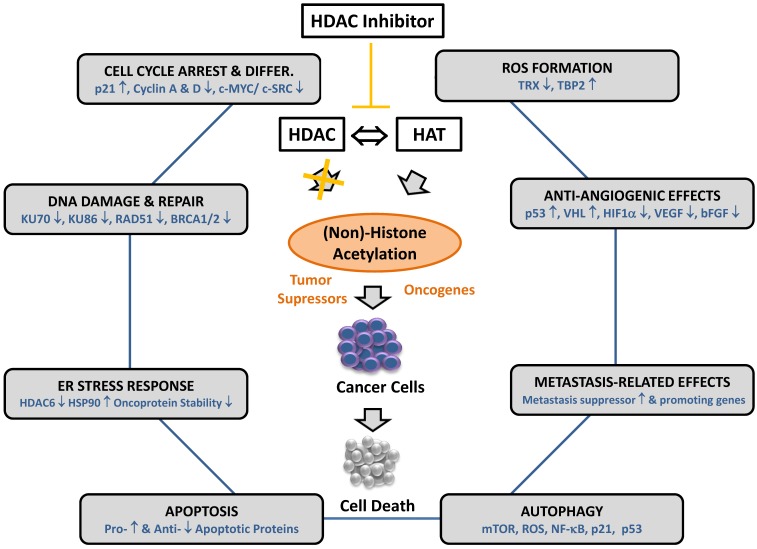Figure 1.
Overview about major effector mechanisms of histone deacetylase (HDAC) inhibitor (HDACi) in cancer cells. Important individually affected molecules (blue font) of the different categories of HDACi- activated anti-tumor pathways (grey boxes) are displayed. HDACi interfere with the deacetylation of histone and non-histone protein deacetylation of many tumor tuppressor genes and oncogenes (among other regulatory proteins) in cancer cells; this posttranslational modification renders them active and thereby induces the different effector mechanisms eventually causing cell death. ↑ upregulation or activation; ↓ downregulation or inhibition; HAT, histone acetyl transferase(s); ROS, rewactive oxygen species; TRX, thioredoxin; TBP2, TRX-binding protein 2; p53, tumor suppressor protein p53; VHL, von Hippel Lindau factor; HIF1α, hypoxia-inducible factor 1α; VEGF, vascular endothelial growth factor; bFGF, basic fibroblast growth factor; mTOR, mammalian target of rapamycin; NF-κB, nuclear factor lappa B; p21, cyclin-dependent kinase inhibitor 1 (p21CIP/WAF1); HDAC6, histon deacetylase 6, c-MYC, cellular homolog of the oncogene (v-myc) of avian myelocytomatosis virus strain 29; c-SRC, cellular SRC kinase oncogene; ER, endoplasmatic reticulum; Ku70, Lupus Ku autoantigen protein p70; Ku 86, Lupus Ku autoantigen protein p86; RAD51 (BRCC5); DNA repair protein RAD51 homolog; BRCA1/2, BRCA1/2, DNA repair associated (prev. breast cancer suceptibility protein ½).

